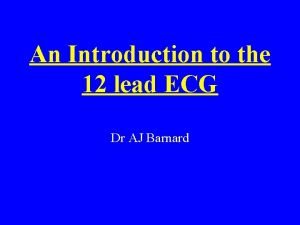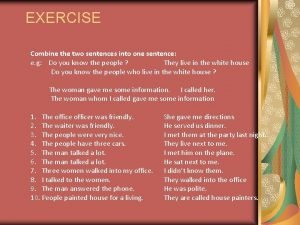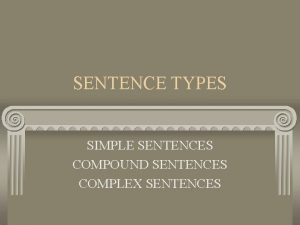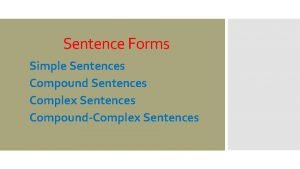LeadIn Sentences The LeadIn Sentence leads into or







- Slides: 7

Lead-In Sentences The Lead-In Sentence leads into, or introduces, the quote. If the lead-in is a complete sentence, it is followed by a colon. Mercy Lewis expressed her fear: “I did nothing! God save me!” (1122). If the lead-in is not a complete sentence or if it references a character speaking, it is followed by a comma. As Mary Esty muttered, “It be better that she be dead” (1098).

Short quotes should be in quotation marks and the character’s name (if applicable) should be in the lead-in. The page number is in parentheses after the quote with the period after the parentheses. John Proctor yelled, “But it is my name! I cannot have another in my life!” (1116). Mary’s fear was shown when she tried to run from the courtroom: “Without hesitation, she bolted for the door” (1067). Mercy Lewis, “with a sly smile and raised eyebrow, ‘Aye. I did dance in the forest’” (1039).

Long quotes and sections of dialogue should be formatted with the lead-in and dialogue as follows: The damage to their relationship was obvious: PROCTOR. Do you doubt me yet? ELIZABETH. It is not my doubt, John. She struggles for the words. It is your own that you must face now. PROCTOR. His voice angry. Doubt me then. I’ll not argue more with you. (1099)

Lead-In Sentences The Lead-In Sentence leads into, or introduces, the quote. If the lead-in is a complete sentence, it is followed by a colon. Hester Prynne demands that Dimmesdale grant her one request: “Thou shalt forgive me!” (185). If the lead-in is not a complete sentence or if it references a character speaking, it is followed by a comma. As Chillingworth notes, “the shadow of his figure, which the sunlight cast upon the floor, was tremulous” (115).

Short quotes should be in quotation marks and the character’s name (if applicable) should be in the lead-in. The page number is in parentheses after the quote with the period after the parentheses. As Hawthorne notes, “the shadow of the curtain fell on Hester Prynne, and partially concealed her” (1116). The old minister even questions Pearl about her origins: “Art thou a Christian child—ha? ” (109). Arthur Dimmesdale, “with heaving chest and bright eyes, cried out, ‘Hester! Forgive me, Hester!’” (139).

Long quotes should be formatted with the lead-in as follows: The description of Hester is pertinent to this characterization: The young woman was tall, with a figure of perfect elegance, on a large scale. She had dark and abundant hair, so glossy that it threw off the sunshine with a gleam, and a face which, besides being beautiful from regularity of feature and richness of complexion, had the impressiveness belonging to a marked brow and deep black eyes. She was lady-like, too, after the manner of the feminine gentility of those days; characterized by a certain state and dignity. (17) Though her beauty is the primary focus, it is her dignity that stands out throughout the novel.

Work Cited Last Name, First Name. Title of Book. Publisher, Year of First Publication.













